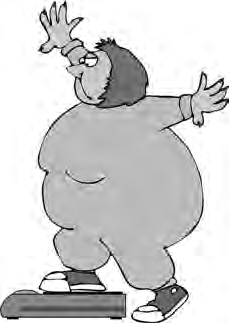Read 100 Perks of Having Cancer: Plus 100 Health Tips for Surviving It Online
Authors: Florence Strang
Tags: #Health; Fitness & Dieting, #Diseases & Physical Ailments, #Internal Medicine, #Oncology, #Cancer, #Medicine & Health Sciences, #Clinical, #Medical Books, #Alternative Medicine, #Medicine
100 Perks of Having Cancer: Plus 100 Health Tips for Surviving It (44 page)

Polycarbonates containing BPA were widely used in food containers and
bottles, but are mostly found today in other places like cash register receipts
and canned-food linings. And unfortunately, recycling these materials is
reintroducing BPA into more places, including toilet paper, napkins, and
newspaper. It is harmful in many ways, despite what the chemical compa-
nies and mega manufacturers tell us, but it is still manufactured at a growing
rate of 3.6 million tons a year! It is inexpensive to make and widely available
for many uses. It’s a manufacturer’s dream!
But for us it’s a nightmare because our body reacts the same way to the
BPA in these plastics as it does to hormones, more specifically, the sex hor-
mones. Exposure to endocrine disruptors, or chemicals that mimic hor-
mones, potentiates the risk for hormonally related cancers like breast,
ovarian, uterine, and prostate. But the harmful effects don’t stop there. Here
is a growing list of all abnormalities linked to BPA exposure:
●
ovarian cancer
●
breast cancer
●
prostate cancer
●
premature birth
●
miscarriage
●
liver disease
●
obesity
●
diabetes
●
infertility
●
erectile dysfunction
Perk #45: Home Alone
175
●
feminizing male organs in utero
●
heart disease/lipid abnormality
●
attention-deficit disorder (ADD) and attention-deficit/hyperactivity dis-
order (ADHD)
BPA is one of the hundreds of chemicals found in newborns’ umbilical
cord blood and has been for years.
According to the Center for Disease Control (CDC) more than 90 percent
of the American population over the age of six has detectable BPA in their
urine. A recent study done at the University of Harvard showed a 1,221 percent
increase in BPA levels in the urine of those who ate soup from cans three
times a week, as the can linings are potent BPA leechers. (Some can linings
and water-bottle linings are clear, so you don’t even know they’re there.) And
don’t think that avoiding plastic can liners will get you out of harm’s way.
Paper products, like copy paper, paper money, and airline tickets, contribute
approximately thirty-three tons of BPA to the environment every
year in the United States and Canada. We are exposed to those
Be aware of the
papers every day, and the employees that handle those papers
dangers of plastic
every day are at an even higher risk of exposure.
exposure and make
Lately, with increased interest in the dangers of BPA, there
small changes to
is more research being conducted on how BPA causes such clear
reduce it.
changes in the reproductive hormones. We know that BPA binds
with the estrogen receptors when we are exposed to it and dis-
rupts hormone function. But now researchers have discovered that it is the
metabolite of BPA, MBP, which plays a bigger role in the estrogen response
by grabbing it with not just one receptor, like the BPA, but with two recep-
tors, doubling the potency of the abnormal hormone response.
We know about BPA and the harm it’s doing. We know BPA can get
into our bodies by eating and drinking contaminated foods stored in BPA-
lined cans and food containers, but it also easily passes through our skin
and into our bloodstream from direct contact. Studies show it can remain
on your skin for up to two hours. It is impossible to avoid all plastics in
your life, so try to avoid plastic exposure as much as you can. Here are some
general guidelines:
176
100 Perks of Having Cancer
●
Avoid eating canned food and choose frozen or fresh to avoid the BPA
exposure in the can lining. This is especially strong in acidic foods like
tomatoes and tomato soup.
●
Choose plastics marked with #1, #2, #4, or #5, as these numbered plastics
do not contain BPA. (Plastic marked #7 is categorized as “other,” which
can mean safe plant-based cellulose or unsafe BPA combo plastics. Check
with the manufacturer for specifics.) However, even plastics that are
marked “BPA-free” may still have BPA if they were recycled from BPA con-
taining plastics. There’s just no way of knowing.
●
Reheat all foods in glass or ceramic containers, as heat tends to increase
the leeching of the chemicals from plastics into your food. Don’t use plas-
tics for hot beverages or food.
●
Avoid containers marked “PC” (polycarbonate) if the container is clear
plastic.
●
Don’t reuse single-use plastics as they can break down and leech chemicals.
●
If you work with cash register receipts, money, or thermal paper in other
areas, wear gloves to protect yourself from BPA exposure.
●
Avoid plastic teethers and toys and stick to cloth, cotton, and uncoated
wood.
●
Choose natural flooring instead of vinyl.
●
Cover food with paper towels instead of plastic wrap when microwaving.
There are many chemicals that go into making plastics, not just harmful
BPA. Be mindful of the plastics that are in your life.
For more information on plastic safety go to www.ewg.org.



Perk #46
Cancer Forced Me to
Brush Up on My Math Skills
M
ath has never been my strong point. So
you can just imagine my confusion
when I started to investigate breast cancer
statistics. There were stats for incidence,
survival rates, recurrence rates, and lots of
other numbers that made little sense to me.
I really wanted to understand what I was
getting myself into with this cancer thing, so
I asked my daughter, an honors math stu-
dent, to do a little tutorial with me before I
set off to decipher the numbers. To think, if
not for cancer, I would have gone through
life with less than adequate math skills!
The first stat I found was rather daunting. Stage-3 breast cancer yields
just over a 50 percent five-year survival rate. But wait, the news gets better.
By exercising, I can reduce my risk of recurrence by nearly 40 percent. I’m
a runner, so YAY for me! Believe it or not, the younger you are at the time
of diagnosis, the lower your chances of survival, so being diagnosed after
the age of forty ups my odds of surviving by another 3 percent. Yet another
encouraging study found that a healthy diet resulted in as much as a 30
percent decrease in the risk of death following a cancer diagnosis. I am
happy to report that I have fully embraced a healthy, cancer-fighting diet.
Now, bear with me while I do the math:
50% chance of survival overall
Plus 40% for exercising
Plus 3% for age at diagnosis
Plus 30% for a good diet
I 177 J

178
100 Perks of Having Cancer
If my calculations are correct, my odds of surviving breast cancer are
123 percent. (Plus or minus 30 percent for drinking red wine. Scientists can’t
seem to agree on whether it is good for me or bad for me.)
DO NOT get too caught up in the stats when you have
cancer; they can be misleading. You are not a statistic.
DO everything you can to improve your health through
exercise, a healthy diet, and maintaining a positive attitude.
HEALTH TIP #46
Try Crunching These Numbers
Here are some statistics (not to get caught up in):
●
30%—percentage of all cancer deaths in the United States that are caused
by smoking. Quitting is the single most effective thing you can do to
reduce your risk of cancer—above anything else.
●
30 to 40%—percentage of cancer deaths related to human behavior like
poor diet and inactivity.
●
72,000,000—the number of people who are currently obese in the United
States (2012).
●
54,304—the number of cancer deaths among
women related to obesity in the United States this
Statistics can be
year (20% of all cancer deaths).
sobering . . . and
motivating.
●
95%—the number of umbilical cord blood sam-
ples that tested positive for DDT residue, a cancer-
causing pesticide banned in 1972.
●
68%—the five-year survival rates for all cancers, up 18% from forty
years ago.


